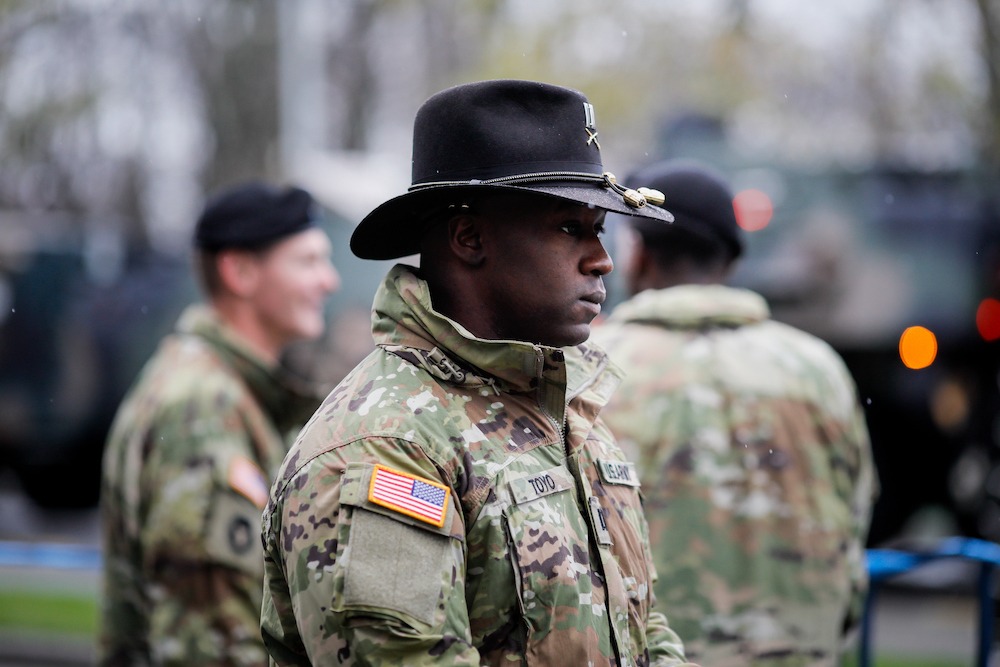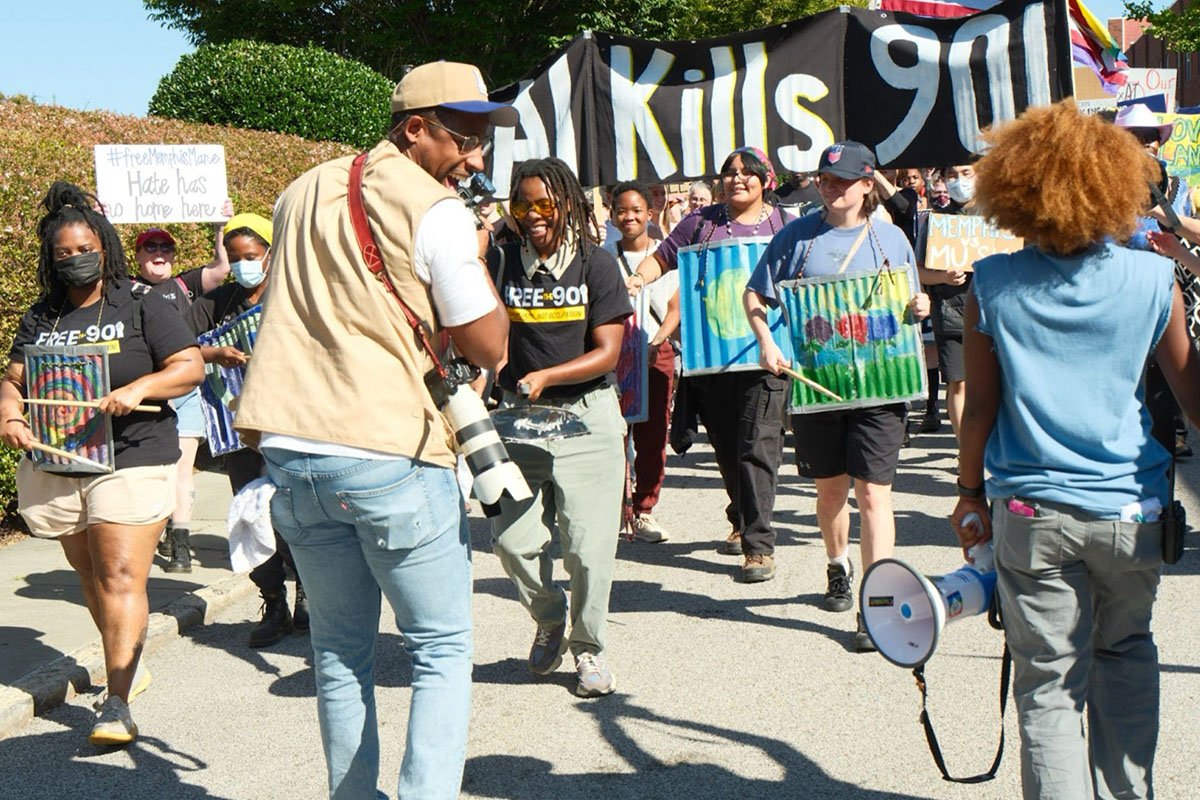
Camp Lejeune is one of many military bases across the United States with a history of severe contamination. Built in 1942, it covers over 156,000 acres in Jacksonville, North Carolina. From the beginning, its mission was to train marines and sailors for war. Between 1953 and 1987, one million people lived at Camp Lejeune, all of whom are now at high risk of developing serious health problems due to drinking tainted water. Some of those health problems include lung cancer, renal toxicity, ovarian cancer, pancreatic cancer, aplastic anemia, liver cancer, and scleroderma. Black service members were at higher risk of drinking polluted water than their white counterparts; most had fewer opportunities for career advancement than white military members and were therefore more likely to live on Camp Lejeune and other, often contaminated, military bases.
Camp Lejeune’s water was tainted with two sets of pollutants. In 1982, volatile organic compounds (VOCs) such as perchloroethylene, vinyl chloride, trichloroethylene, and benzene were found lurking in the water at the military facility. VOCs are liquid and solid chemicals that easily evaporate into gas, which then pollutes the environment. Perfluoroalkyl and polyfluoroalkyl substances—PFAS, for short—also polluted the groundwater at Camp Lejeune. PFAS, also known as “forever chemicals,” are a group of over 5,000 different chemicals that can take close to a thousand years to break down. PFAS are also dangerous to human health, as prolonged or frequent exposure may cause bladder cancer, leukemia, prostate cancer, and lymphoma.
Origins of Toxic Chemicals at Camp Lejeune
Two of the eight water-distribution plants at Camp Lejeune were heavily contaminated with industrial solvents for 34 years. The safe exposure limit for perchloroethylene and trichloroethylene is five parts per billion (ppb). The highest perchloroethylene level at the Tarawa Terrace water distribution plant, which serves Camp Lejeune, was 215 ppb, and the highest trichloroethylene level at the Hadnot Point water distribution plant, which likewise serves the camp, was 1,400 ppb. These harmful solvents came from two main sources—the ABC One-Hour Cleaners dry-cleaning firm located off-base; and the military itself, which improperly disposed of toxic substances used to clean weapons and equipment.
More recently, PFAS were found in Camp Lejeune’s groundwater at a concentration of 179,348 parts per trillion (ppt)—the safe exposure limit to such chemicals is 70 ppt. This time, PFAS contamination resulted from excessive use by firefighters and trainees of the fire suppressant, AFFF, between 50 and 98 percent of which is made up of these dangerous substances. AFFF was developed in 1966 by the US Navy and the 3M company and is very effective at putting out jet fuel and petroleum fires. In 1989, the Environmental Protection Agency (EPA) declared Camp Lejeune a Superfund site, and cleanup efforts have been carried out since.
Black Service Members More Likely to Develop Harrowing Diseases as a Result of Toxic Exposure on Military Bases
During WWII, only 5 percent of all military members were Black. Camp Lejeune was segregated from its founding. Black marines and sailors were stationed and received basic training at Montford Point, a segregated military base that is now part of Camp Lejeune. Living conditions there were unhygienic as the military facility was in a swampy area full of bugs. Black service members were only allowed to enter Camp Lejeune with a white marine, and once there, they regularly experienced racism. Additionally, they were regularly denied promotion opportunities. When Black service members did become officers, they were often discouraged from specializing in combat fields that led to top jobs and four-star ranks. “The public that we serve should see a reflection of that public in our ranks. From top to bottom and left to right,” said Brig. Gen. Milford Beagle, a Black infantryman who commands Fort Jackson in South Carolina, the army’s largest basic training post, in a piece in USA Today.
Today, 19 percent of all service members are Black. Despite this significant increase in representation, Black service members still have fewer opportunities for career advancement, as statistics show. A 2020 CNN review of data provided by the Department of Veteran Affairs and the Pentagon revealed that 9 percent of Black service members are officers, whereas 76 percent of white military members have this high rank. Out of the army’s 245 generals, the highest military rank, only 43 are Black. Of its 94 colonels, a slightly lower rank than general, just two are Black. And only two of the army’s 41 most senior military commanders are Black.
“While there’s been some increase in relative numbers in minority officers, it’s not been proportional to the increase that we’re serving,” said David Shulkin, former Veterans Affairs Secretary. “So, you have more minority members serving in the front-line jobs and therefore getting higher numbers of injuries.” Since low-rank service members usually live on military bases to train and gain experience, they also suffer higher levels of exposure to toxic agents, which are still present on many installations. Consequently, years or even decades after their discharge, they develop life-threatening illnesses.
Today, more young minority officers are choosing combat assignments, a sign of progress. But the remnants of racism remain. “The fact that many major military bases are still named after Confederate leaders and the ongoing worries about white nationalism in the military’s ranks—these factors risk causing a detrimental impact on our military’s ability to recruit and retain new and diverse talent,” said Bishop Garrison, Human Rights First’s chief ambassador to the national security community.
Sign up for our free newsletters
Subscribe to NPQ's newsletters to have our top stories delivered directly to your inbox.
By signing up, you agree to our privacy policy and terms of use, and to receive messages from NPQ and our partners.
Black Communities Inhale 56 Percent More Pollution than They Generate
Due to factors such as the unavailability of affordable land, redlining, historical racism, and lack of political power to fight corporations and city planners, many Black communities are located near pollution hotspots, including truck routes, ports, toxic landfills, industrial sites, and military bases. While the Black population breathes in 56 percent more toxic air than it releases, white people inhale 17 percent less pollution than they generate. Environmental racism, which refers to the disproportionate impact of environmental hazards on people of color, is one of the leading causes of death among Black communities. Both income and race play a role in environmental racism, but the latter is the most reliable and accurate indicator of closeness to pollution.
Corporations receive lower fines for violating environmental laws in predominantly low-income or Black areas.
Half of Jacksonville’s residents live on Camp Lejeune, as the slightly lower rent and land cost make it more accessible than other parts of the city. They all experience toxic exposure. Though drinking water at Camp Lejeune is now safer to consume, PFAS still lurk on in at least 14 of the camp’s sites. These chemicals are difficult to remove from the environment even with the most effective and innovative technology. Only by 2025 will an evaluation of risks and exposure posed by PFAS contamination at the military installation be completed. It is estimated that it will take several decades to fully clean up Camp Lejeune.
How Can We Fight Environmental Racism and Social Injustice?
Unlike public law, private law can help vulnerable communities achieve environmental justice using legal tools such as toxic tort and class action lawsuits.
Public law has failed to hold corporations liable for releasing toxic agents. Corporations receive lower fines for violating environmental laws in predominantly low-income or Black areas. This only encourages companies to keep contaminating these same neighborhoods.
Unlike public law, private law can help vulnerable communities achieve environmental justice using legal tools such as toxic tort and class action lawsuits. Toxic tort protects the rights of disadvantaged communities when their health is threatened by corporations’ unethical actions. It is also an effective tool to hold companies from the chemical and industrial industries liable for environmental contamination. By gathering and filing a class action lawsuit, people from impacted communities have a considerably greater chance of achieving justice than if they just filed a complaint through public law.
With the assistance of reputable and experienced law firms specializing in toxic exposure, vulnerable communities are likely to receive substantial financial compensation from the companies that have been jeopardizing their health. This could trigger a change in how such companies act in the future. By having to pay millions or even billions to the people they harmed, these industries may implement policies that minimize the amount of pollution they release. Furthermore, companies may be discouraged from reckless pollution if litigation, often the most expensive part of settling cases, may affect their bottom line.
A laudable event occurred recently—the passage of the Camp Lejeune Justice Act, which was proposed in the spring of 2021 and signed into law by President Biden on August 11, 2022. Under this new legislation, everyone who lived at the military base between August 1, 1953, and December 31, 1987, for at least 30 days and developed a health problem related to toxic water can file a lawsuit with the US government. While the Camp Lejeune Justice Act will help veterans obtain the compensation they deserve for their unjust suffering, it has a limitation: toxic exposure victims only have until 2024 to file a claim with the government.
Finally, it is also important to offer people of color impacted by pollution a platform from which they can speak freely and devise solutions to minimize environmental racism. Perhaps the most effective recipe for fighting environmental racism combines grassroots activism and collaboration between disenfranchised communities and private law firms. Grassroots movements continue to activate people in ways that encourage and trigger political and economic change. Adding private law to the mix can further help in combating environmental inequality.











